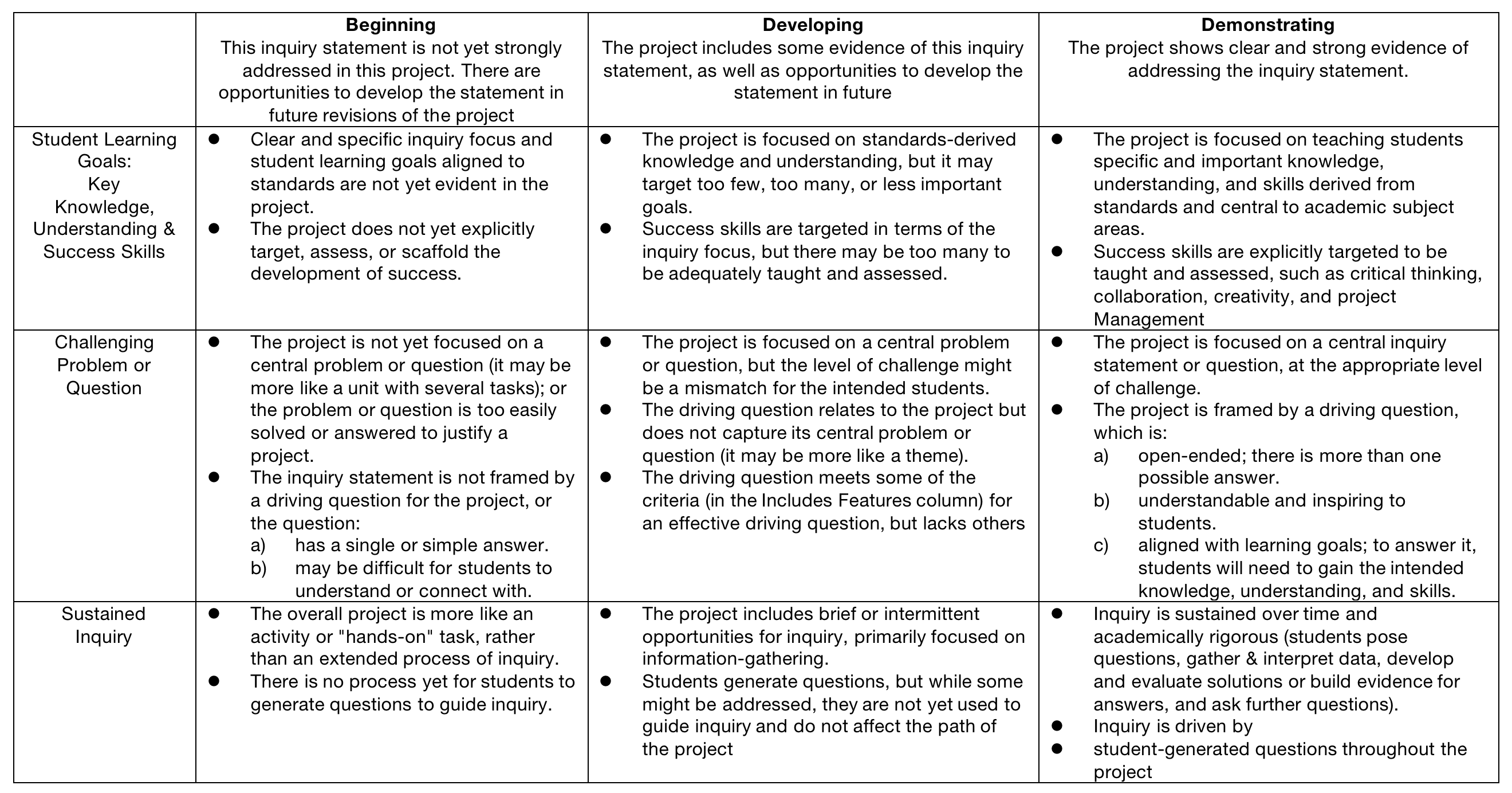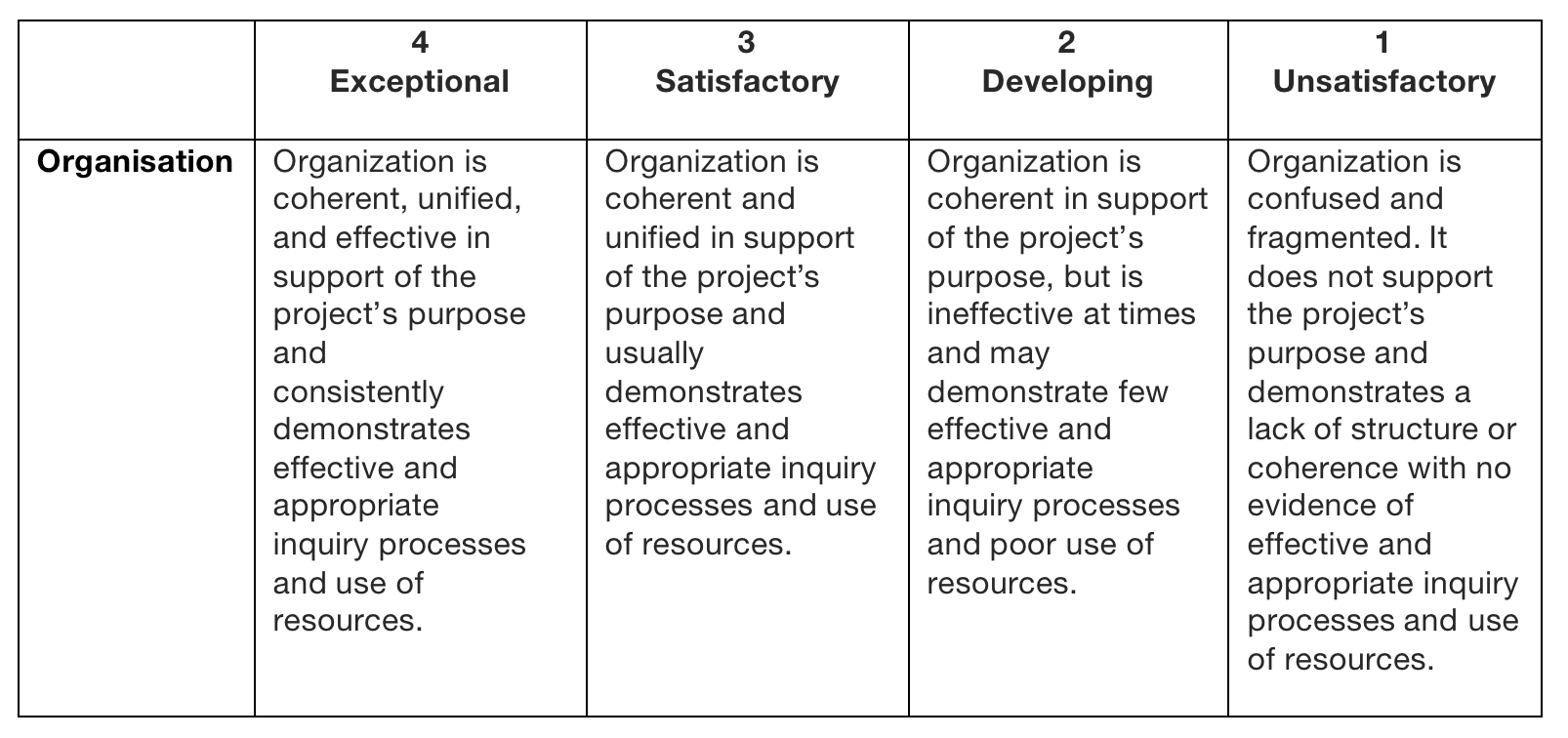Planning the Project - Assessment
| Sjedište: | Akademie EU |
| E-kolegij: | Food as Cultural Heritage |
| Knjiga: | Planning the Project - Assessment |
| Otisnuo/la: | Visiteur anonyme |
| Datum: | nedjelja, 14. prosinca 2025., 17:47 |
1. Assessment

2. The Assessment Rubric
The Stealth methodology recommends the use of assessment rubrics throughout the project. The following steps are intended to help teachers decide when to use a rubric for assessing the project, group work, or any other task that does not have a clear right or wrong answer.
The rubric is tool that to can help teachers identify success criteria, communicate expectations, provide focused feedback, and grade the inquiry process and final product. A good rubric needs to be designed with care and precision in order to truly help teachers distribute and receive the expected results. It is for this reason that the STEALTH approach merely guides teachers in the creation of assessment rubrics and does not prescribe which rubrics should be used.
Teachers should apply learning outcomes that are specific for their school, the students they teach and the availability of resources. Furthermore, teachers should design their rubrics to focus on a small number of skills, knowledge and learning outcomes that they wish their students to develop.
An example of the assessment rubric below is attached to this unit.

3. Defining the Goals
Before creating a rubric, teachers need to decide the type of rubric they would like to use, and that will largely be determined by the inquiry focus, inquiry statement/question, specific learning objectives and desired outcomes.
Teachers should ask themselves the following questions:
- How detailed do I want my feedback to be?
- How will I break down my expectations for this project?
- Are all of the tasks equally important?
- How do I want to assess performance?
- What standards must the students hit in order to achieve acceptable or exceptional performance?
- Do I want to give one final grade on the project or a cluster of smaller grades based on several criteria?
- Am I grading based on the work or on participation? Am I grading on both?
Once teachers have decided on how detailed they would like the rubric to be and the goals they are trying to reach, they are ready to create their rubric.
4. Determine The Criteria
This is where the learning objectives for the project come into play. Here, teachers need to brainstorm a list of knowledge and skills that they would like to assess for the project. Group them according to similarities and get rid of anything that is not absolutely critical. A rubric with too much criteria is difficult to use! It is best to use between 4-7 specific statements for which unambiguous, measurable expectations are created in the performance levels. Teachers need to be able to spot the criteria quickly while grading and be able to explain them quickly when instructing their students. In an analytic rubric.
5. Create Performance Levels
Once teachers have determined the broad levels they would like students to demonstrate mastery of, the teacher will need to decide what type of scores they will assign based on each level of mastery. Most ratings scales include between three and five levels. Some teachers use a combination of numbers and descriptive labels like "(4) Exceptional, (3) Satisfactory, etc." while other teachers simply assign numbers, percentages, letter grades or any combination of the three for each level. You can arrange them from highest to lowest or lowest to highest as long as your levels are organized and easy to understand.
Another approach is to simply colour code the whole or parts of performance descriptors with such as green (fully achieved), orange (partially achieved) and red *not achieved). This method provides a a clear visual assessment of progress, identifies areas for improvement and the colour code can easily be aligned to numerical or percentage values on completion of the project.
6. Write Descriptors
This is probably your most difficult step in creating a rubric.Here, teachers will need to write short statements of your expectations underneath each performance level for every single criteria. The descriptions should be specific and measurable. The language should be parallel to help with student comprehension and the degree to which the standards are met should be explained.
If one criteria is "Organization" and the (4) Exceptional, (3) Satisfactory, (2) Developing, and (1) Unsatisfactory scale is used, teachers would need to write the specific content a student would need to produce to meet each level. It could look something like this:

7. Revise the Rubric
After creating the descriptive language for all of the levels (making sure it is parallel, specific and measurable), teachers need to go back through and limit their rubric to a single page. Too many parameters will be difficult to assess at once, and may be an ineffective way to assess students' mastery of a specific standard.
Teachers should consider the effectiveness of the rubric, asking for student understanding and co-teacher feedback before moving forward. Teachers should not be afraid to revise as necessary. It may even be helpful for them to grade a sample project in order to gauge the effectiveness of their rubric. Teachers can always adjust the rubric if need be before handing it out, but once it's distributed, it will be difficult to retract.